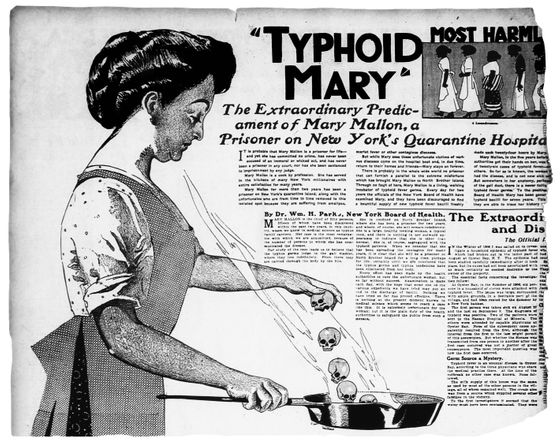What is the reason for the harmful effects of attracting attention to the person who spread the epidemic first?

Due to the epidemic of the new infectious disease (COVID-19), which has high infectious power, the presence of '
Patient zero: why it's such a toxic term
https://theconversation.com/patient-zero-why-its-such-a-toxic-term-134721
Zero patient is a word that refers to a patient who has been infected by an infectious disease for the first time, but the definition is not clear, Mr. McKay explained, 'There are various interpretations of the' first time 'part.' He said that the exact meaning depends on the context.
According to McKay, the Zero patient may refer to 'the first person in the world to be infected with the infectious disease in question,' or 'the first person to be infected in a particular community,' or 'the first person to be infected.' It is sometimes pointed out. For example, if there are asymptomatic pathogen carriers who do not have a medical condition, the “first infected person in a particular community” may differ from the “first infected person”. In this case, the one who gets the attention is the 'person who was first infected', so it is customary that this is called the zero patient.

Because of the exhaustive debate over this kind of definition, McKay said the word 'primary case' was created to refer to 'the first person infected in a particular community' in addition to the Zero patient. It was used to track when and where the first infected person was infected and how they moved afterwards.
Also, 'the first person infected in the world' has come to be called the 'alpha case.' However, Mr. McKay said, 'The first patient in the hospital record to have the earliest positive reaction' may be referred to as the alpha case, as the first infected person in the world is usually not found. '
Words such as “primary case” and “alpha case” are worth discussing because they are important in chronologically summarizing how the infection spread. However, McKay claims that the 'zero patients' have been used arbitrarily.
The

But McKay points out that public health officials have been treated as 'disease detectives' as a result of the media's active reporting of Mary's typhus case. He explained that a composition was born that 'an infected person transmits an infectious disease to a harmless victim.'
The problem with this composition is that 'only known infections will be of interest.' McKay cited the case of

What McKay points out is the problem that ' only certain infected people are focused so that other possibilities are ignored .' When thinking about the spread of infection, it is necessary to look at carriers of subclinical pathogens. However, when attention is focused on the No. 0 patient, the possibility that 'the infection had occurred before the No. 0 patient' is neglected. At the same time, McKay said that if the discussion focused on the personal behavior of infected people such as Zero Patients, there would be no discussion of 'community-wide infection control measures'.
Mr. McKay said that the contact tracking method is important as a countermeasure against COVID-19, but when he considers the infectious disease to be a familiar thing rather than using the word Zero patient as another person's affairs, He argues that he can better consider actions to reduce the risk of infection such as self-isolation and social distance.
Related Posts:
in Note, Posted by darkhorse_log







